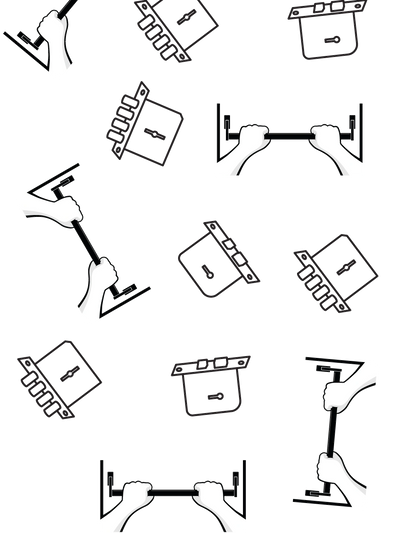BS EN 12209

BS EN 12209 Building Hardware - Mechanically operated locks, latches and locking plates
Features assessed include normal use (and abuse) forces, long-term durability, fire/smoke resistance, corrosion and temperature resistance and security, both manipulative and physical. In addition, it contains information on marking, including CE marking because BS EN 12209 is a harmonised standard.
Classification
BS EN 12209 classifies mechanically operated locks, latches and locking plates using an 11 digit coding system.
Digit 1 - Category of use
Three categories of use are identified:
- grade 1: low frequency of use by people with a high incentive to exercise care and a small chance of misuse, e.g. internal residential doors
- grade 2: medium frequency of use by people with some incentive to exercise care but where there is some chance of misuse, e.g. internal office doors
- grade 3: high frequency of use by public or others with little incentive to exercise care and with a high chance of misuse, e.g. public doors
Digit 2 - Durability
Twelve grades are identified with minimum figures for deadbolt and snib operation, and latch bolt operation with and without side load, as shown. The side load is applied to the latch bolt when it is being withdrawn
Digit 3 Door mass and closing force
Nine grades are identified with maximum figures for closing force at various door masses as shown.
Note: closing force is from a standing start: i.e. fully extended latch bolt in contact with striking plate at start of test
Digit 4 - Fire resistance
Two grades are identified: -
– grade 0: not approved for use on fire/smoke door assemblies
- grade 1: suitable for use on fire/smoke door assemblies tested to EN 1634-1 etc.
Digit 5 Safety
No requirement, but note: a lock or latch conforming to this standard can, at the same time, also be part of an exit device conforming to EN 179 or EN 1125.
Digit 6 Corrosion resistance
Eight grades are identified with neutral salt-spray (NSS) corrosion resistance grades from EN 1670:1998, with and without temperature resistance as shown:
Digit 7 - Security and drill resistance
Seven grades are identified with minimum figures for requirements relating to physical attack, with or without drilling of the lockcase, as shown: -
Digit 8 - Field of door application
Fifteen grades are identified for differing applications –
Digit 9 - Type of key operation and locking
Nine grades are identified for differing types of key operation.
- grade 0: not applicable;
- grade A: cylinder lock or latch; manually locking;
- grade B: cylinder lock or latch; automatically locking;
- grade C: cylinder lock or latch; manually locking with intermediate locking;
- grade D: lever lock or latch; manually locking;
- grade E: lever lock or latch; automatically locking;
- grade F: lever lock or latch; manually locking with intermediate locking;
- grade G: lock or latch without key operation; manually locking;
- grade H: lock without key operation; automatically locking.
Digit 10 - Type of spindle operation
Five grades are identified:-
- grade 0: lock without follower
- grade 1: lock with sprung lever or knob
- grade 2: lock with light unsprung lever
- grade 3: lock with heavy unsprung lever
- grade 4: lock with manufacturer’s own specification furniture
Digit 11 - Key identification
Nine grades are identified relating to the number of differs and levers. Grade 0 relates to a latch with no locking action:
Copyright © 2021 Mekatron General Trading - All Rights Reserved.